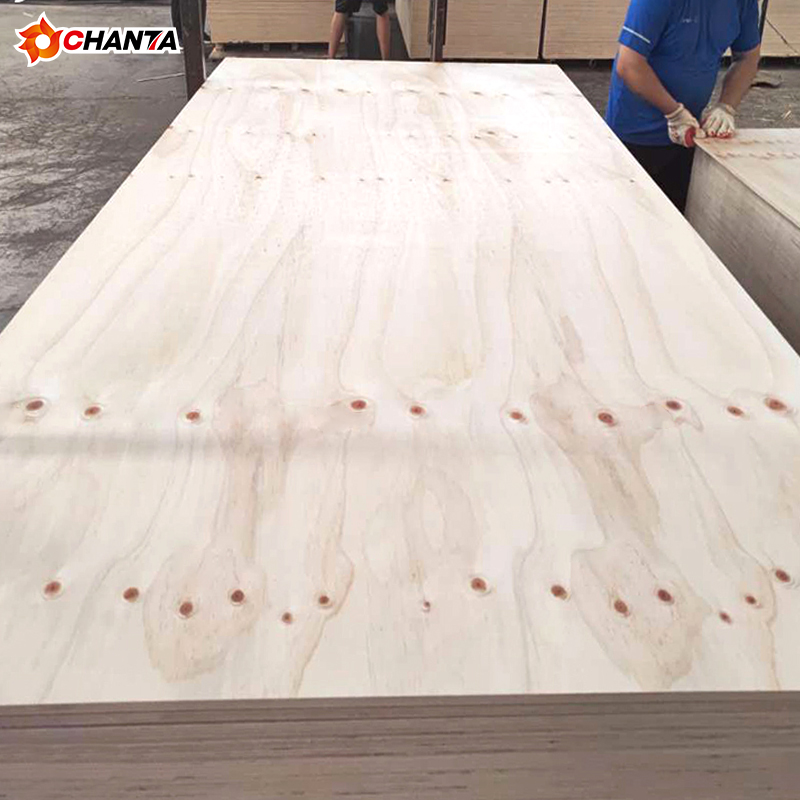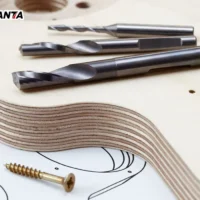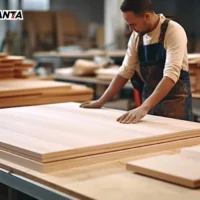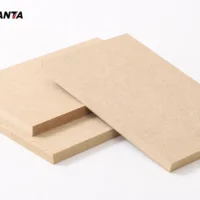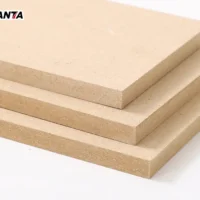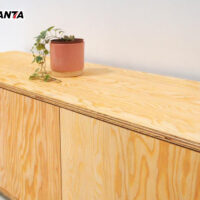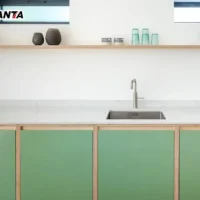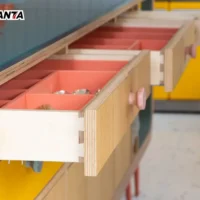Melamine MDF (Medium Density Fiberboard) is a versatile material widely used in furniture and interior design. Its popularity stems from its durability, cost-effectiveness, and attractive appearance. Below, we explore its features, uses, and benefits in detail.
Understanding
Melamine MDF is made by fusing a decorative melamine layer onto MDF boards. This process creates a smooth, resilient surface. The MDF core consists of wood fibers bonded with resin under high pressure.
The melamine coating provides a stylish and protective finish. It mimics various textures like wood grain, stone, or solid colors. Consequently, it offers excellent versatility for aesthetic designs.
Key Features
- Durable Surface
Melamine provides a scratch-resistant and easy-to-clean surface, ensuring long-lasting appeal. - Wide Range of Designs
The decorative melamine layer comes in countless colors and patterns, enhancing design flexibility. - Affordable Alternative
Compared to solid wood, offers a budget-friendly option with comparable beauty. - Moisture Resistance
While not entirely waterproof, it resists moisture better than untreated MDF.
What is Melamine MDF?
Melamine MDF (Medium Density Fiberboard) is a versatile material widely used in furniture and interior design. Its popularity stems from its durability, cost-effectiveness, and attractive appearance. Below, we explore its features, uses, and benefits in detail.
Understanding Melamine MDF
It is made by fusing a decorative melamine layer onto MDF boards. This process creates a smooth, resilient surface. The MDF core consists of wood fibers bonded with resin under high pressure.
The melamine coating provides a stylish and protective finish. It mimics various textures like wood grain, stone, or solid colors. Consequently, it offers excellent versatility for aesthetic designs.
Key Features
- Durable Surface
Melamine provides a scratch-resistant and easy-to-clean surface, ensuring long-lasting appeal. - Wide Range of Designs
The decorative melamine layer comes in countless colors and patterns, enhancing design flexibility. - Affordable Alternative
Compared to solid wood, melamine MDF offers a budget-friendly option with comparable beauty. - Moisture Resistance
While not entirely waterproof, It resists moisture better than untreated MDF.
Common Uses
1. Furniture Construction
It is ideal for cabinets, shelves, and wardrobes. Its smooth finish and sturdiness meet both functional and aesthetic needs.
2. Wall Paneling
This material enhances interiors by providing decorative and durable wall coverings.
3. Office and Retail Fixtures
It is commonly used in desks, partitions, and display units. Its professional look and practicality make it a favorite.
4. Kitchen Applications
It works well in kitchen cabinets due to its easy-to-clean surface.
Advantages of Choosing
Cost-Effective
It is more affordable than hardwood but offers similar durability and aesthetic appeal.
Low Maintenance
Its non-porous surface resists stains, making cleaning simple and quick.
Eco-Friendly Option
Some manufacturers use recycled materials in the production of MDF, reducing environmental impact.
Customizable
It is easy to cut and shape, allowing for tailored designs in various projects.
What is Melamine MDF?
It (Medium Density Fiberboard) is a versatile material widely used in furniture and interior design. Its popularity stems from its durability, cost-effectiveness, and attractive appearance. Below, we explore its features, uses, and benefits in detail.
Understanding
It is made by fusing a decorative melamine layer onto MDF boards. This process creates a smooth, resilient surface. The MDF core consists of wood fibers bonded with resin under high pressure.
The melamine coating provides a stylish and protective finish. It mimics various textures like wood grain, stone, or solid colors. Consequently, it offers excellent versatility for aesthetic designs.
Key Features of Melamine MDF
- Durable Surface
Melamine provides a scratch-resistant and easy-to-clean surface, ensuring long-lasting appeal. - Wide Range of Designs
The decorative melamine layer comes in countless colors and patterns, enhancing design flexibility. - Affordable Alternative
Compared to solid wood, it offers a budget-friendly option with comparable beauty. - Moisture Resistance
While not entirely waterproof, it resists moisture better than untreated MDF.
Common Uses of Melamine MDF
1. Furniture Construction
It is ideal for cabinets, shelves, and wardrobes. Its smooth finish and sturdiness meet both functional and aesthetic needs.
2. Wall Paneling
This material enhances interiors by providing decorative and durable wall coverings.
3. Office and Retail Fixtures
It is commonly used in desks, partitions, and display units. Its professional look and practicality make it a favorite.
4. Kitchen Applications
Melamine MDF works well in kitchen cabinets due to its easy-to-clean surface.
Advantages of Choosing Melamine MDF
Cost-Effective
Melamine MDF is more affordable than hardwood but offers similar durability and aesthetic appeal.
Low Maintenance
Its non-porous surface resists stains, making cleaning simple and quick.
Eco-Friendly Option
Some manufacturers use recycled materials in the production of MDF, reducing environmental impact.
Customizable
It is easy to cut and shape, allowing for tailored designs in various projects.
Caring for Melamine MDF
To maintain its appearance, avoid using abrasive cleaners. Wipe the surface regularly with a damp cloth. Place protective pads under heavy items to prevent dents or scratches.














